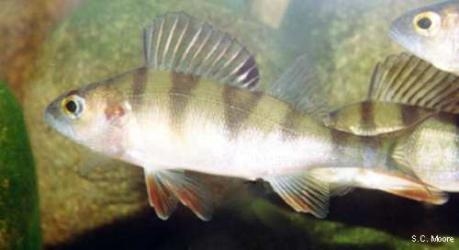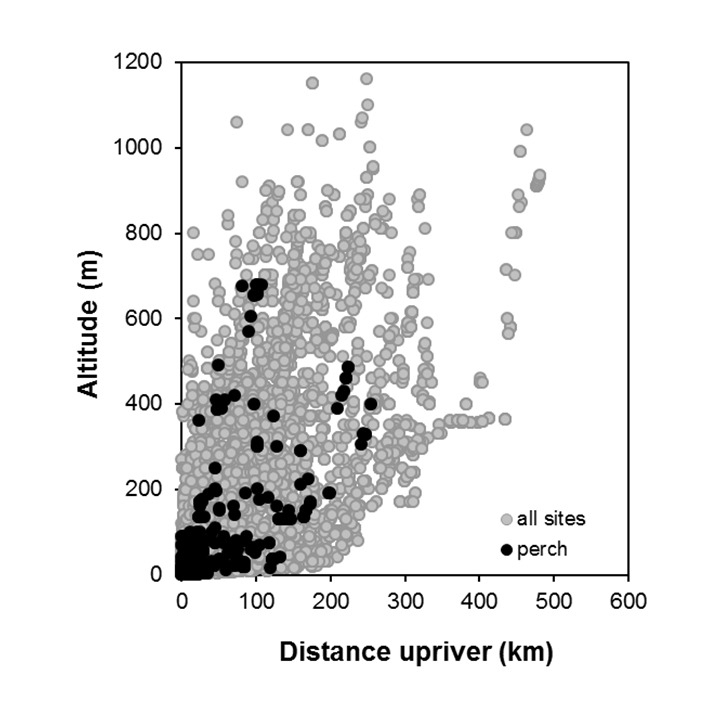Perch | redfin perch
Perca fluviatilis (Linnaeus, 1758)

Redfin perch belong in the Percidae family, a family of about 60 species that are native to the Northern Hemisphere. One species has become established in New Zealand and it is known simply as the perch. New Zealand perch come from Tasmanian stocks that were originally imported from England. They have become well established in Otago and Southland, but also occur in many other parts of New Zealand, especially around Auckland, the Waikato and in North Island west coast lakes south of New Plymouth.
Perch can be distinguished from other species by the presence of the two dorsal fins, the first having 13–17 firm sharp spines. There is also a broad flat spine on the gill cover. Perch have six or more dark bands along their sides; these are most prominent in small fish. The bottom edge of the caudal fin is bright red-orange, as are the anal and pectoral fins. These features make perch easy to recognize.
Although perch were liberated widely in the late 1870s, there was little interest in their angling potential until after 1990. They are a fine table fish with firm white flesh, but their small size and lack of fighting ability meant that they never became as popular with anglers as the salmonids. Perch are suitable game fish for youngsters because they are relatively easy to catch. Most perch in New Zealand are between 1–2 kg in weight.
Perch prefer slow-flowing and still water habitats. They are strictly carnivorous and adults feed mainly on other fish. Perch have been shown to reduce the abundance of common bullies in lakes. They also reduce inanga, smelt and crayfish in lakes where they have been introduced. At high densities, small fish predominate and can cause toxic cyanobacterial blooms.
![Perch distribution map [2024]](/sites/default/files/styles/wide/public/2024-02/Perch.jpeg?itok=QeufAcjA)

